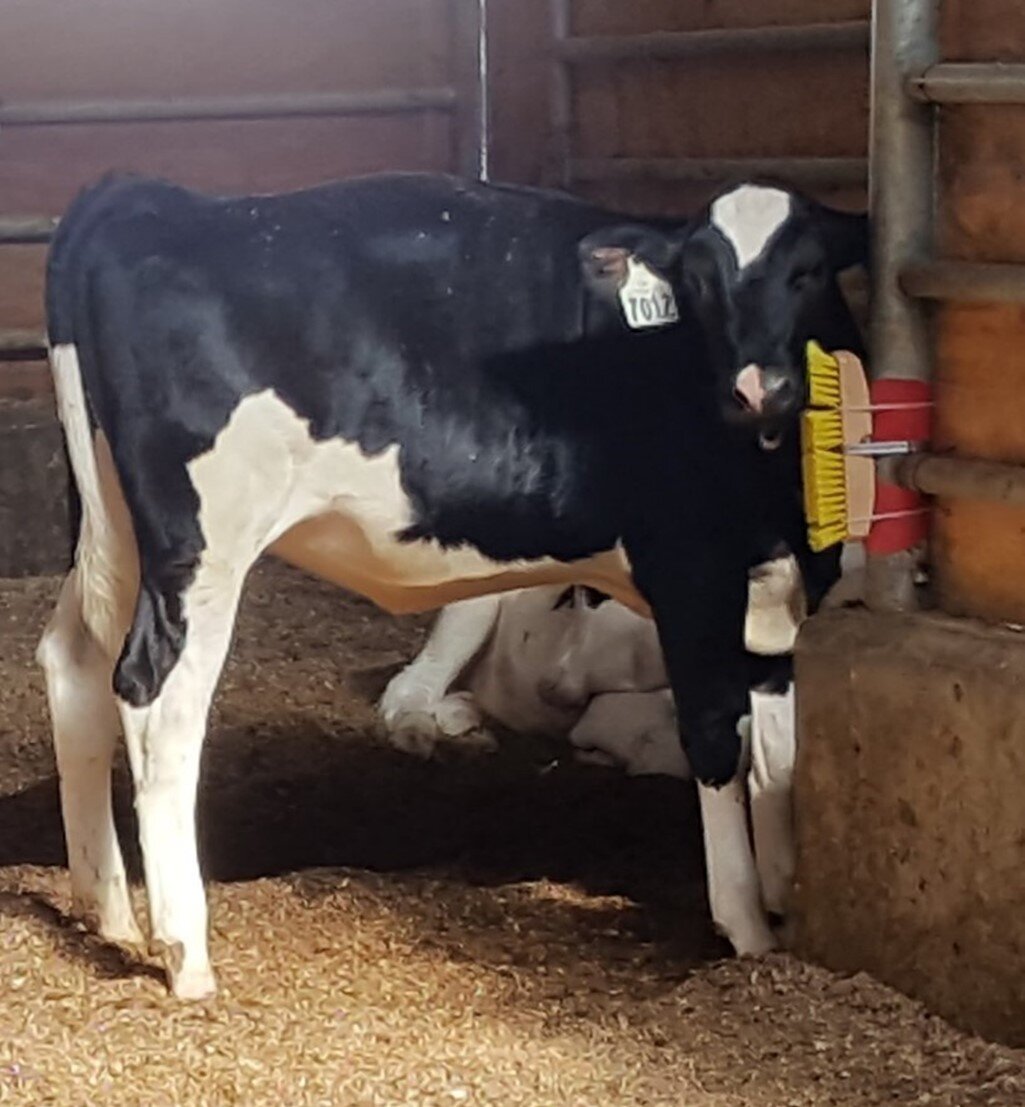
Researchers from the University of British Columbia (UBC), Vancouver, Canada, studied brush use in young dairy cows, an important animal welfare issue that has not been adequately investigated. Credit: UBC Animal Welfare Program
Dairy cows are naturally motivated to take care of their bodies and scratch the hard-to-reach areas. Dairy cattle are able to use mechanical brushes at all stages of their lives, provided they have the chance. The Journal of Dairy Science published a new study by researchers from the Animal Welfare Program at the Faculty of Land and Food Systems University of British Columbia in Vancouver, Canada. It is the first time that stationary brushes were studied among weaned dairy cows.
Cows without access to brushes are more likely to rub their heads against the walls of pen troughs and around water trough edges, thereby exposing themselves to injury. Young cattle are also motivated to use their mouths to manipulate objects. Studies in the past have shown that young cattle who had access to stationary brushes and hanging hemp ropes that they could manipulate orally showed a reduction in non-nutritive, potentially dangerous oral behaviors like tongue rolling and sucking on wire mesh pen walls or other pen hardware.
Access to brushes is a matter of welfare for cattle. Weaned dairy cows are often kept in poor housing environments that lack proper outlets for grooming, oral manipulation, and other natural behaviors. While rotating brushes are useful for cattle to reach hard-to-reach areas, stationary brushes can be more cost-effective and allow for other behaviors such as oral manipulation.
Marina von Keyserlingk (Ph.D.), lead investigator, stated, "While providing brushes for dairy cows is becoming more common," but that providing objects for oral manipulation was not well explored. This seems to be a very important behavior for young cattle. This study looked at not only grooming but also oral behaviors. It also explored heifers preferences for brush type and placement.
Four rectangular scrub brushes were attached at the fence around the experimental pen that housed four heifers in phase 1. The phase examined whether the heifers preferred stiffer or softer bristles, a vertical or horizontal orientation of brushes, or a particular place for the brushes in the pen. The heifers were then moved to freestalls with either a horizontally mounted scrub brush to the front rail of the stall or without brushes. To examine the effects of this deprivation period on the stalls, brushes were added after five days. Both phases used video cameras to record and observe behaviors.
Researchers found that the heifers started using brushes almost immediately after being exposed to them for the first time. The first phase saw brushes used mainly for grooming (approximately 60%), mostly of the head. However, the heifers also showed a high amount of oral brush manipulation (approximately 40%). Brush use was steady after a peak the first day. All heifers used every brush at least once during this stage. The majority of brush use in phase 2 (approximately 75%) was done by oral manipulation. In a rebound effect, the heifers who were initially without brushes in this phase used more brushes after being put back in the stalls. This was about three times the amount of brushing done by the heifers who did not have access to brushes at all.
The team confirmed that oral manipulation of brushes during all stages of the experiment was consistent with time. This reinforces the belief that this is a good behavior for young cattle. The lack of differences in bristle stiffness or horizontal orientation of brushes suggests that it may not matter if they are provided.
"Our study shows that the brush usage patterns across the days suggests that stationary brushes can be functionally relevant to the natural behavior and interest of heifers over time. This is an important characteristic for environmental enrichments." said von Keyserlingk. Recent evidence suggests that adult cows are motivated to use brushes. Depriving them of these resources could lead to poor welfare.
Find out more about Anthrax and vintage shaving brushes
Jennifer M.C. has more information. Van Os et al., Stationary brush usage in naive milk heifers, Journal of Dairy Science (2021). Journal information: Journal of Dairy Science Jennifer M.C. Van Os and colleagues, Stationary brush usage in naive milk heifers (2021). DOI: 10.3168/jds.2021-20467
